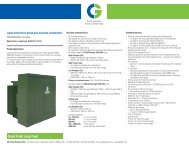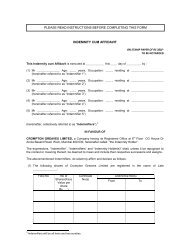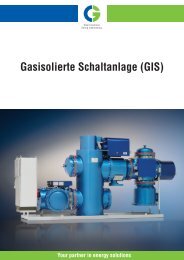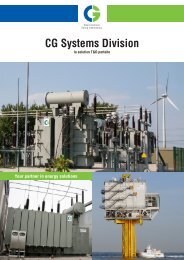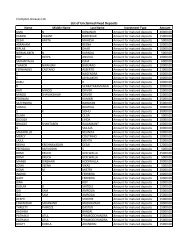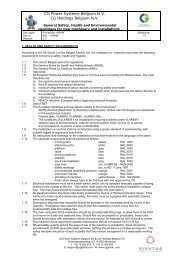Create successful ePaper yourself
Turn your PDF publications into a flip-book with our unique Google optimized e-Paper software.
Crompton Greaves Ltd.<br />
Significant Accounting Policies<br />
Schedule (A)<br />
1 Basis of presentation of Financial Statements<br />
(i) The Financial Statements of the subsidiaries used in the consolidation are drawn upto the same<br />
reporting date as that of the parent Company, ie year ended 31st March, <strong>2004</strong><br />
(ii)<br />
The accounts have been prepared using historical cost convention except for the revaluation of<br />
certain fixed assets and on the basis of a going concern, in accordance with Section 211 (3C) and<br />
other provisions of the Companies Act, 1956, with revenue recognised and expenses accounted on<br />
accrual, including for <strong>com</strong>mitted obligations<br />
Insurance and other claims are accounted for as and when admitted by the appropriate authorities<br />
2 Principles of Consolidation<br />
(i) The financial statements of the parent <strong>com</strong>pany and its subsidiaries have been consolidated on a line<br />
by line basis by adding together the book values of like items of assets, liabilities, in<strong>com</strong>es and<br />
expenses after eliminating intra-group balances, intra-group transactions and unrealised profits resulting<br />
therefrom<br />
(ii)<br />
(iii)<br />
(iv)<br />
The financial statements of the parent <strong>com</strong>pany and its subsidiaries have been consolidated using<br />
uniform accounting policies for like transactions and other events in similar circumstances<br />
The excess of cost to the parent <strong>com</strong>pany of its investment in each of the subsidiary over its share of<br />
equity in the respective subsidiary, on the acquisition date, is recognised in the financial statements<br />
as Goodwill on Consolidation and carried in the Balance Sheet as an asset Negative goodwill is<br />
recognised as Capital Reserve on Consolidation<br />
Investments in Associate Companies have been accounted under the Equity Method as per Accounting<br />
Standard 23 “Accounting for Investments in Associates in Consolidated Financial Statements”, issued<br />
by the Council of the Institute of Chartered Accountants of India<br />
Under the Equity Method of Accounting the investment is initially recorded at cost, identifying any<br />
goodwill / capital reserve arising at the time of acquisition The carrying amount of investment is<br />
adjusted thereafter for the post acquisition change in the investor’s share of net assets of the<br />
investee The consolidated statement of Profit & Loss reflects the investor’s share of the results of<br />
the operations of the investee<br />
3 The <strong>com</strong>pany has disclosed only such Policies and Notes from the individual financial statements, which<br />
fairly present the needed disclosures Lack of homogeneity and other similar considerations made it<br />
desirable to exclude some of them, which in the opinion of the management, could be better viewed, when<br />
referred from the individual financial statements<br />
104





